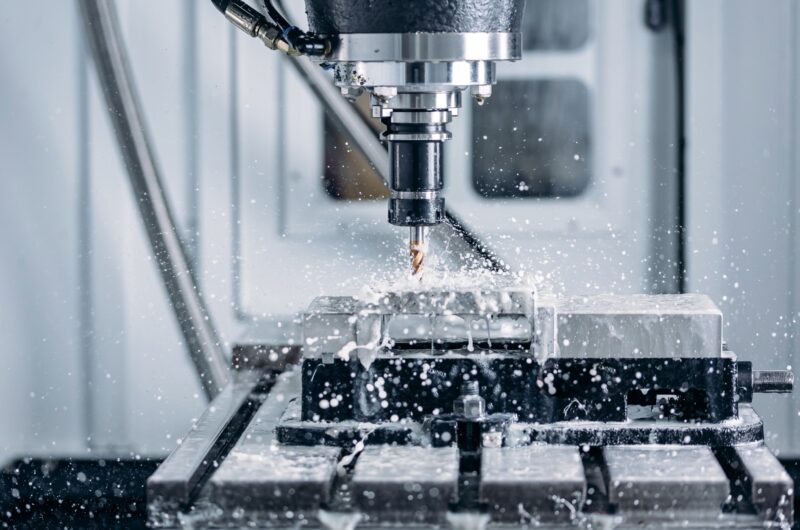CNC machining makes it possible to build complex parts with very high precision. Tight tolerances are easier to meet when a machine can be programmed to repeat every cut exactly the same way. That accuracy matters most when the parts play a big role in how something runs. Think about equipment used in aerospace assemblies, vehicle drivetrains, or medical enclosures. These parts often can’t rely on trial and error. They need to be right from the start.
Machining has changed a lot over the years. Tools aren’t just cutting blocks of metal anymore. With CNC setups like lathes, multi-spindle machines, and milling systems, it’s possible to make high-quality parts quicker and with better consistency. Especially when projects need to scale, picking the right CNC method helps handle fast production while holding the same quality standards. That’s important when planning build cycles late in the year.
Understanding CNC Machining Basics
CNC stands for Computer Numerical Control. The process does not need someone to guide every move, like with manual machining. Instructions are loaded into a computer, telling the machine exactly where to cut and how deep to go. This reduces mistakes and keeps dimensions tight from part to part.
Manual machining still has a place for some jobs, like quick prototypes or short runs. But as parts get more complicated, automated systems win out by saving time and reducing risk. They also cut cleaner, make more consistent shapes, and leave a smoother finish when the job’s done.
Precision matters a lot when it comes to making parts fit together. Even a slight mistake can create gaps, leaks, or stress points in the final assembly. In industries like aerospace or medical, that risk just isn’t worth it.
Types of CNC Machines Used for Complex Builds
No single machine solves every challenge. The most common types all have a different focus.
– CNC lathes spin a part and cut material away, making them perfect for round or symmetrical pieces like rings, tubes, or sleeves.
– Multi-spindle machines use several tools at once, great for building lots of similar parts in a hurry. Small threaded pieces or sets that must match are often made this way.
– Vertical milling machines cut down from above, while horizontal mills remove material from the side. Each has strength where space is tight or the design is complex.
Garnett Component Sales offers CNC parts made with multi-axis machining for projects that involve challenging cross-holes or unique features, supporting higher-output runs without losing detail.
Common Industries and Applications
Nearly every sector uses CNC-produced parts, but the most common include:
– Aerospace, with parts for seating frames, aircraft sensor mounts, and hardware that fits into tight spaces without extra weight.
– Automotive, where brackets, engine housings, and mounts need to deal with heat, movement, and vibration for years on the road.
– Industrial manufacturing, which demands gears, plugs, and heat-resistant alloys for equipment that runs nonstop.
Wear-resistant parts and custom threads are common requests in industrial builds. The ability to machine complex features quickly means less downtime for assembly lines or field repairs.
Advantages of CNC for Custom or Tight-Tolerance Parts
CNC machining brings three big benefits to most builds.
First, it saves time. Once you program the part, you can copy it again and again with almost no difference between runs. This helps meet deadlines and keeps rework low.
Second, it is flexible. CNC equipment can change tasks faster, so if you need to swap from aluminum to steel, or from one size to another, it’s usually much easier than with older tools.
Third, it’s accurate. Each cut matches the original digital file—and with the right checks in place between runs, that level rarely slips. If the part design needs to shift mid-project, CNC setups can adjust faster, so big changes aren’t a big problem.
At Garnett Component Sales, customers benefit from CNC processes that support both small batch work and large-scale production, for parts as varied as precision bushings to machine castings and tight-tolerance spacers.
Seasonal Planning for Fall and Early Winter Production
The later part of the year often brings tighter shipping deadlines and scheduling pressures. This makes fall and early winter a smart window to finalize part designs. In the Southeast, bad weather rarely interrupts production, but logistics and shipping can slow as the calendar moves closer to the holidays.
A few planning tips help sidestep those slowdowns:
– Confirm all specifications by early fall to allow enough machine setup time
– Schedule maintenance windows for equipment while machine shops are less busy
– If parts require special coatings or secondary work, reserve those services before year-end rush
Being proactive minimizes costly rush shipments and helps keep builds on time. It’s also the best time to review the condition of CNC tools and recalibrate machines, avoiding part issues during the last weeks of the year when lead times are tight.
Keep Your Builds Moving with Smart Machine Choices
Having the right CNC setup often matters as much as the part design itself. Each material and batch size means considering a different mix of lathes, mills, or multi-spindle setups. Changing machines just to get a job done rarely works as smoothly as matching the project to the right setup at the start.
When jobs need parts with lots of detail, flatness, or odd shapes, CNC gives the flexibility and accuracy that manual work can’t. Fast, predictable runs—and less waste—bring both short and long jobs in under deadline.
Smart planning at the start keeps projects rolling smoothly through the busy seasons. That means fewer surprises, less wasted material, and delivery targets met every time. For anyone in aerospace, automotive, or industrial spaces, the right machine makes even complex builds simpler and more repeatable from start to finish.
When your build calls for tight specs or high-volume output, we’re ready to help you set it up right. Our team supports a wide range of part sizes, materials, and shape requirements with reliable speed and accuracy. Planning during fall keeps your schedule steady as timelines get tighter. See how we support advanced builds with our CNC machining capabilities. Contact Garnett Component Sales to get the right tools in place before year-end.








